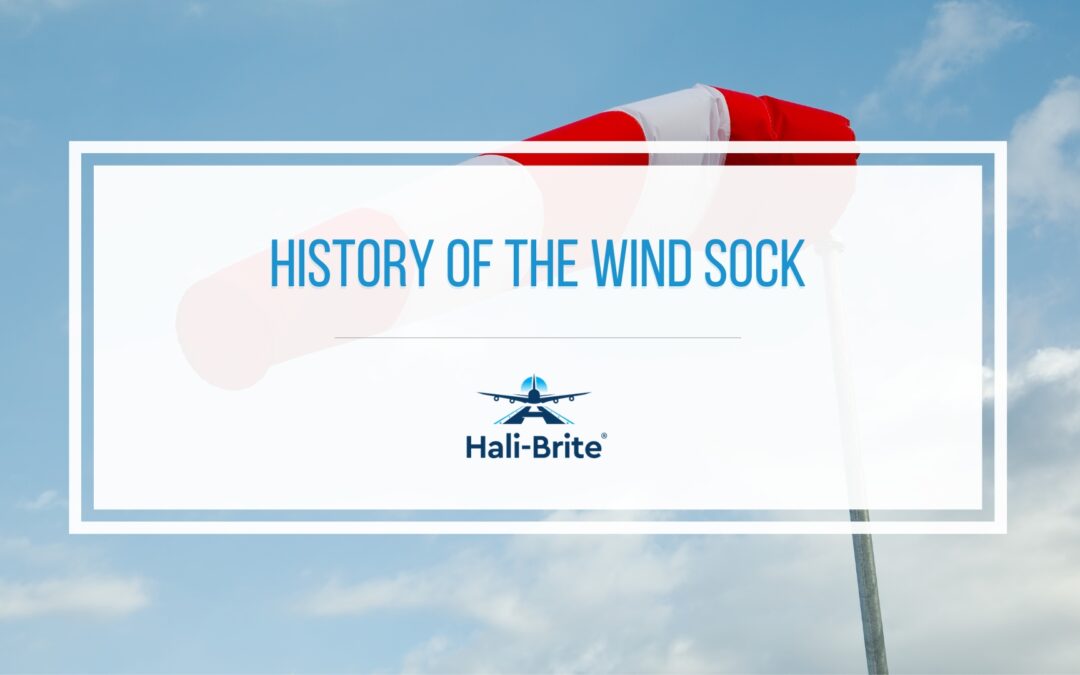Next time you’re at an airport, take a look around for a brightly colored cone billowing in the wind. That’s a wind sock, a simple yet vital tool used to communicate wind speed and direction to pilots. It’s essential for safe takeoffs and landings, helping pilots make informed decisions about their flight path.
But did you know that wind socks have been around for centuries, serving various purposes beyond just indicating wind direction? Let’s explore how the wind sock has evolved over time, from its ancient origins to its modern-day role in aviation safety, and the different ways it has been used throughout history.
- Ancient Origins
- Evolution in the 19th Century
- Modern Development
- Applications in Aviation
- Hali-Brite: Your Partner in Aviation Safety
Ancient Origins
While the exact origin of the wind sock remains a mystery, it dates back centuries, with early uses in both Japan and Rome. In Japan, wind socks have been a part of cultural celebrations, particularly the Boys’ Day celebration, also known as Tango no Sekku, an annual event held on the fifth day of the fifth month to honor the young boys in each family.
During the celebration, families hang colorful, carp-shaped wind socks called koinobori outside their homes. These wind socks, made of paper or cloth, symbolized strength, courage, and perseverance, as carp are known for their ability to swim upstream against strong currents. Each family typically displays one koinobori for each son, with the largest representing the eldest.
But wind socks weren’t just for festive occasions. In ancient Rome, wind socks served a practical purpose. The Romans used wind socks as military banners, helping soldiers identify their units and commanders on the battlefield. These banners were made of fabric and attached to a horizontal crossbar on a spear.
Evolution in the 19th Century
The 19th century brought about significant changes in the design and use of wind socks, particularly in the maritime world. As sailing ships dominated global trade and naval operations, the need for accurate wind information became paramount for navigation and safety.
Sailors recognized the value of wind socks in determining wind direction and began installing them on ships’ masts, allowing them to assess wind conditions at a glance. Wind socks helped ships navigate safely in and out of harbors, provided crucial information about changing weather conditions, and aided in the timing of departures and arrivals.
The design of wind socks started to evolve, taking inspiration from the shape and function of ship sails. Just as a sail catches the wind to propel a ship forward, early wind socks were designed to capture wind currents and visually indicate their direction. These early versions were often simple conical shapes made of fabric.
Modern Development
As aviation took flight in the early 20th century, the wind sock found a new home at airfields and airports. Pilots needed a reliable way to assess wind conditions before takeoff and landing. The wind sock, with its simple design and clear visual cues, proved to be the perfect solution.
In the early days of aviation, wind socks were often makeshift affairs, crafted from whatever materials were readily available. However, as aviation technology advanced, so too did the design of the wind sock. To ensure consistency and reliability, the Federal Aviation Administration (FAA) had established standards for wind socks used at airports.
According to the FAA specifications, airport wind socks must be made of durable materials, such as cotton, synthetic fabrics, or a combination of both, to withstand various weather conditions. The acceptable colors are limited to white, yellow, or orange, and no lettering or logos are allowed on the fabric to maintain clarity and visibility.
Applications in Aviation
Wind socks are indispensable in the aviation industry, ensuring the safety of every flight. These wind direction indicators provide real-time information about wind conditions at airports and airfields, essential for pilots to make informed decisions about takeoffs, landings, and other flight maneuvers.
In critical situations, wind socks can be the difference between a safe landing and a potential disaster. For example, if a pilot encounters unexpected wind shear, a sudden change in wind speed or direction, the wind sock can provide an early warning, allowing the pilot to take corrective action and avoid a dangerous situation.
How Wind Socks Indicate Wind Direction and Speed

Wind socks are designed to be highly visible, typically mounted on poles near runways or other strategic locations at airports. The direction the wind sock points indicates the direction from which the wind is blowing. So, if a wind sock is pointing to the east, it means the wind is coming from the west.
Their segmented design allows pilots to gauge wind speed. Each segment of the wind sock represents an increment of approximately three knots (or 5.5 km/h) of wind speed. A fully inflated wind sock indicates strong winds, while a limp wind sock signifies calmer conditions.
Hali-Brite: Your Partner in Aviation Safety
Now that you know the fascinating wind sock history, why not get one of your own? Hali-Brite offers a wide range of high-quality wind socks to meet your specific needs, including both lighted and unlighted options, as well as solar-powered models that are environmentally friendly and cost-effective.
Our wind socks are FAA-certified, made from durable materials that can withstand harsh weather conditions, ensuring accurate and reliable wind information for years to come. Contact us today at (218) 454-095 or here to learn more about our products and find the perfect windsock for your airport, airfield, or other applications.

